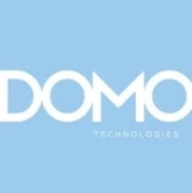

Domo and SnapLogic compete in the data integration and business analytics category. Domo holds an edge in enterprise solutions due to its user-friendly interface and visualization capabilities, making complex data more accessible for non-technical users. SnapLogic stands out with its robust integration and fast deployment capabilities, ideal for companies seeking flexibility without extensive coding.
Features: Domo provides a comprehensive ETL and visualization platform with extensive data connectors that support varied visualization options. It emphasizes automation and user accessibility, minimizing technical complexity for end-users. SnapLogic offers a low-code development environment with fast deployment and strengths in high-volume data transfers, integrating with various third-party platforms for seamless connectivity and operations.
Room for Improvement: Domo could enhance its visualization suite, expand connectors, and improve data display controls. Users desire better integration capabilities for multiple data sources and more sophisticated data management. SnapLogic needs better task execution dashboards, clearer data flow transparency, and additional pre-built connectors. Both platforms could benefit from clearer error messages and improved API management.
Ease of Deployment and Customer Service: Domo supports on-premises, cloud, and hybrid models but faces challenges in customer service responsiveness post-implementation. SnapLogic also supports multiple deployment models focusing on cloud environments, with satisfactory technical support but could improve proactive communication during initial setups.
Pricing and ROI: Domo is priced higher due to its extensive features conducive for large enterprises, offering significant ROI through business insights. SnapLogic is competitively priced, particularly where integrations require minimal coding, and offers a flexible tiered pricing model that permits scalability. Both products provide valuable solutions, with Domo more suited for enterprises seeking a full-service solution, while SnapLogic appeals to organizations desiring cost-effective and flexible integrations.
If you're actually using Domo at a very limited case and you're being charged $20,000, we've seen ROI there, but once it goes really high, you really need to check your metrics and check your profit.
SnapLogic is really helpful and processes in very little time, so it doesn't take much time compared to any legacy tool.
They were quite professional and in around three to five working days, they had identified where they suspected there was an issue and I was able to fix it.
It's very easy to get technical support from Domo.
Support-wise, they are good.
The technical support from SnapLogic is excellent, and I would give it a complete ten.
Some SMEs are allotted for the organization, so in case of any issue, we have their email IDs to contact them for support, including SMEs and community.
The fact that you're able to easily identify the pipelines or flows that have errors, and it notifies you when you're building a pipeline where you can run previews and tell where to fix issues, is helpful.
When fetching files larger than 100 MB from SFTP or any other portal, Domo becomes slow due to the heavy file size.
Sigma, which is written for Snowflake, scales more easily than Domo.
I rate the scalability of SnapLogic as eight out of ten.
In recent years, I haven't had such cases. It's quite stable and I don't have any reservations on its stability.
In terms of overall stability of the platform, it's very stable.
During that time, we faced issues from the project side as Domo was not visible in our portal.
I would rate the stability of SnapLogic as nearly ten out of ten.
But recently, in a year, I haven't found many performance issues in SnapLogic.
End users require a license to run their own reports and dashboards, which are fairly expensive.
Some technical aspects such as Beast Mode calculation could be improved in Domo, as it would provide more clarity and help in giving insights to clients or customer business team requirements.
One of the areas where we've had frustrations with Domo is the aesthetics. The aesthetics are quite limited compared to other BI tools such as Tableau and Power BI.
If the AI capabilities and integrations were more intuitive and easy to learn for new users, it would be greatly beneficial.
They can improve more visuals, with graphical representations, such as how many things can be added, how many users can be added or dropped, and how the back-end nodes can be graphically shown in a better way.
I tend to frequently communicate with SnapLogic to ask for additional features, and they have been responsive.
Domo's pricing is high compared to other BI tools, and it is costly.
For long-time users, it can become expensive, but the trade-off is access to the entire platform instead of licensing different components separately.
They quoted approximately one dollar per KB.
There would be only one point of improvement if the price could be lower.
SnapLogic is positioned at around seven or eight out of ten in terms of pricing.
App Studio is valuable because it allows all the customization we needed; we can decode it, with the view and grid which are all I need, drill-downs, and everything can be done the way I need it.
I have been using it for four years and have been able to extract the information I need from it.
The most valuable feature of Domo is the fact that you can connect multiple inputs and you don't have to have a data warehouse.
I also like the whole child-parent pipeline feature; it allows me to break up a process into smaller pieces and then have one big pipeline that controls these smaller pipelines.
I find SnapLogic to be user-friendly, especially for beginners with limited experience in data engineering or ETL.
It's moving into AI, so we can create AI agents with LLM models. We can use most of the LLM such as Amazon Bedrock, OpenAI, Azure AI.
| Product | Market Share (%) |
|---|---|
| SnapLogic | 1.1% |
| Domo | 0.7% |
| Other | 98.2% |


| Company Size | Count |
|---|---|
| Small Business | 16 |
| Midsize Enterprise | 11 |
| Large Enterprise | 20 |
| Company Size | Count |
|---|---|
| Small Business | 11 |
| Midsize Enterprise | 5 |
| Large Enterprise | 10 |
Domo is a cloud-based, mobile-first BI platform that helps companies drive more value from their data by helping organizations better integrate, interpret and use data to drive timely decision making and action across the business. The Domo platform enhances existing data warehouse and BI tools and allows users to build custom apps, automate data pipelines, and make data science accessible for anyone through automated insights that can be shared with internal or external stakeholders.
Find more information on The Business Cloud Here.
The SnapLogic Intelligent Integration Platform uses AI-powered workflows to automate all stages of IT integration projects – design, development, deployment, and maintenance – whether on-premises, in the cloud, or in hybrid environments. The platform’s easy-to-use, self-service interface enables both expert and citizen integrators to manage all application integration, data integration, API management, B2B integration, and data engineering projects on a single, scalable platform. With SnapLogic, organizations can connect all of their enterprise systems quickly and easily to automate business processes, accelerate analytics, and drive transformation.
We monitor all Data Integration reviews to prevent fraudulent reviews and keep review quality high. We do not post reviews by company employees or direct competitors. We validate each review for authenticity via cross-reference with LinkedIn, and personal follow-up with the reviewer when necessary.